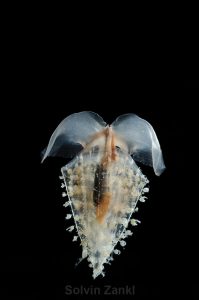
A hatchling green sea turtle on the shore of Raine Island. Source: Queensland Government
Climate change has many consequences that most people are familiar with, such as rising temperatures, melting glaciers and floods, but there is one effect that you may not be familiar with. Climate change is causing sea turtle populations to be 99% female; male sea turtles are disappearing.
The sex of a sea turtle is determined by the temperature of the sand in which the eggs are incubated. Higher temperatures tend to favour female offspring, and rising air and sea temperatures are causing sand to retain more heat. Scientists who went to Australia’s Ingram Island expected the female-to-male ratio to be slightly in favour of females. Instead, they found that the gender ratio was significantly in favour of females, 116 to 1.
This discovery highlighted the extent of climate change’s effect on sea turtle populations. Scientists find this concerning as Australia’s sea turtles primarily nest in two locations: a collection of islands near Brisbane and a remote island known as Raine Island. If these two populations are predominantly female, then their futures are at risk.

A map of Australia’s north eastern coast showing Raine Island and Brisbane, where turtle populations were studied. Source: Queensland Government
By making incisions to determine gonads and examining blood samples for gender specific hormones, Camryn Allen, a scientist with the National Oceanic and Atmospheric Administration, and Michael Jensen, the lead investigator, determined that the turtle population on Raine Island has been predominantly female for the last 20 years. This is no small find; Raine Island is home to one of the biggest sea turtle rookeries on earth with more than 200,000 females nesting on the island. “It was worse than we thought”, remarks Jensen.
On the other hand, Allen and Jensen also found that turtles hatching from the south of Brisbane, where sea temperatures are fairly stable, have a healthy ratio of 2 to1, females to males. This clearly shows the effects of climate change on sea turtle gender.
But just how consequential is this phenomenon? Because the populations’ gender coincides with sea temperatures, it is difficult to say at the moment. However, it may prove advantageous. Male sea turtles mate frequently and with more than just one female. Therefore, having more females than males can allow for more genetic diversity among populations.
Sea turtles have outlasted hunting, poaching, pollution, disease and habitat loss for hundreds of years. Why should they not outlast changing sea temperatures? Jensen believes that rapidly changing sea temperatures will make it more difficult for sea turtles to bounce back. Adding that “evolution requires many generations for animals to adapt.” Sea turtles and other reptiles are so sensitive to changes in temperature that the slightest change could produce populations of only female offspring.
“The northern Great Barrier Reef is one of the most genetically distinct populations of sea turtles in the world. What’s really scary though is to think about applying this problem to populations where the numbers are low” says Allen on the implications of her research.
Allen and Jensen plan to continue their work at other nesting locations around the world, having already collected data from Guam, Hawaii and Saipan.
From Youtube: Time lapse of turtles arriving at Raine Island by Biopixel.
– Ashlea Ahmed
References:
- Jensen, M. P.; Allen, C. D.; Eguchi, T.; Bell, I. P.; Lacasella, E. L.; Hilton, W. A.; Hof, C. A.; Dutton, P. H. Environmental Warming and Feminization of One of the Largest Sea Turtle Populations in the World. Current Biology [Online] 2018, 28, 154–159 (accessed Jan 22, 2018).https://news.nationalgeographic.com/2018/01/australia-green-sea-turtles-turning-female-climate-change-raine-island-sex-temperature/
- Welch, C. 99% of These Sea Turtles Are Turning Female-Here’s Why https://news.nationalgeographic.com/2018/01/australia-green-sea-turtles-turning-female-climate-change-raine-island-sex-temperature/ (accessed Jan 22, 2018).

